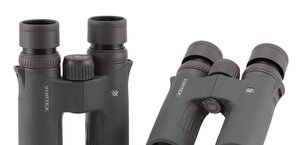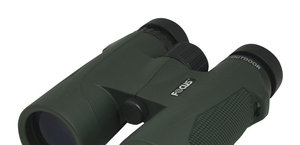All you want to know about binoculars but you are ashamed of asking
3. How do binoculars work?
Optical elements can be divided into three groups: front lenses, prisms and eyepieces (oculars).
Front lens is needed to gather as much light as possible. It gives an image of far objects. The image is real, inverted and diminished.
Please Support UsIf you enjoy our reviews and articles, and you want us to continue our work please, support our website by donating through PayPal. The funds are going to be used for paying our editorial team, renting servers, and equipping our testing studio; only that way we will be able to continue providing you interesting content for free. |
- - - - - - - - - - - - - - - - - - - - - - - - - - - - - - - - - - - - - - - - - - - - - - - -
To magnify an image from objective lens and to direct it into our eye, an eyepiece lens is used. The simplest version of eyepiece lens consist of converging or diverging lens. In binoculars there are also prisms which are use for inverting. The image obtained by a lens is inverted by prisms in order to finally get right image.
This is only a simple scheme. In fact, binoculars are quite more complicated optical instrument. First of all, a lens never consists of only single glass. In most cases it is a system consisting of two sticking lens glasses made from different kind of glass. This construction is responsible for correcting, so called, chromatic aberration. The most expensive binoculars lenses consist of three or four glasses and some of them are low dispersion glasses which make an image almost fully free from any chromatic aberration.
Eyepieces occurred in binoculars usually consist of three lenses arranged in two groups (so called Kellner or reversed Kellner design). The more expensive binocluars contain eyepieces consited of 4-5 lenses in 2-3 groups (Plossl or SuperPlossl designs or other type).
Also inverting image prisms can be arranged in two different ways. A simpler and more popular system is so called Porro (named for its inventor Ignazio Porro). In this system both prisms are arranged in a different line. In the second system so called Roof, lens and prisms with eyepiece lens are arranged in one line. In this case we gain a compact and smaller housing than in porro prisms system.






